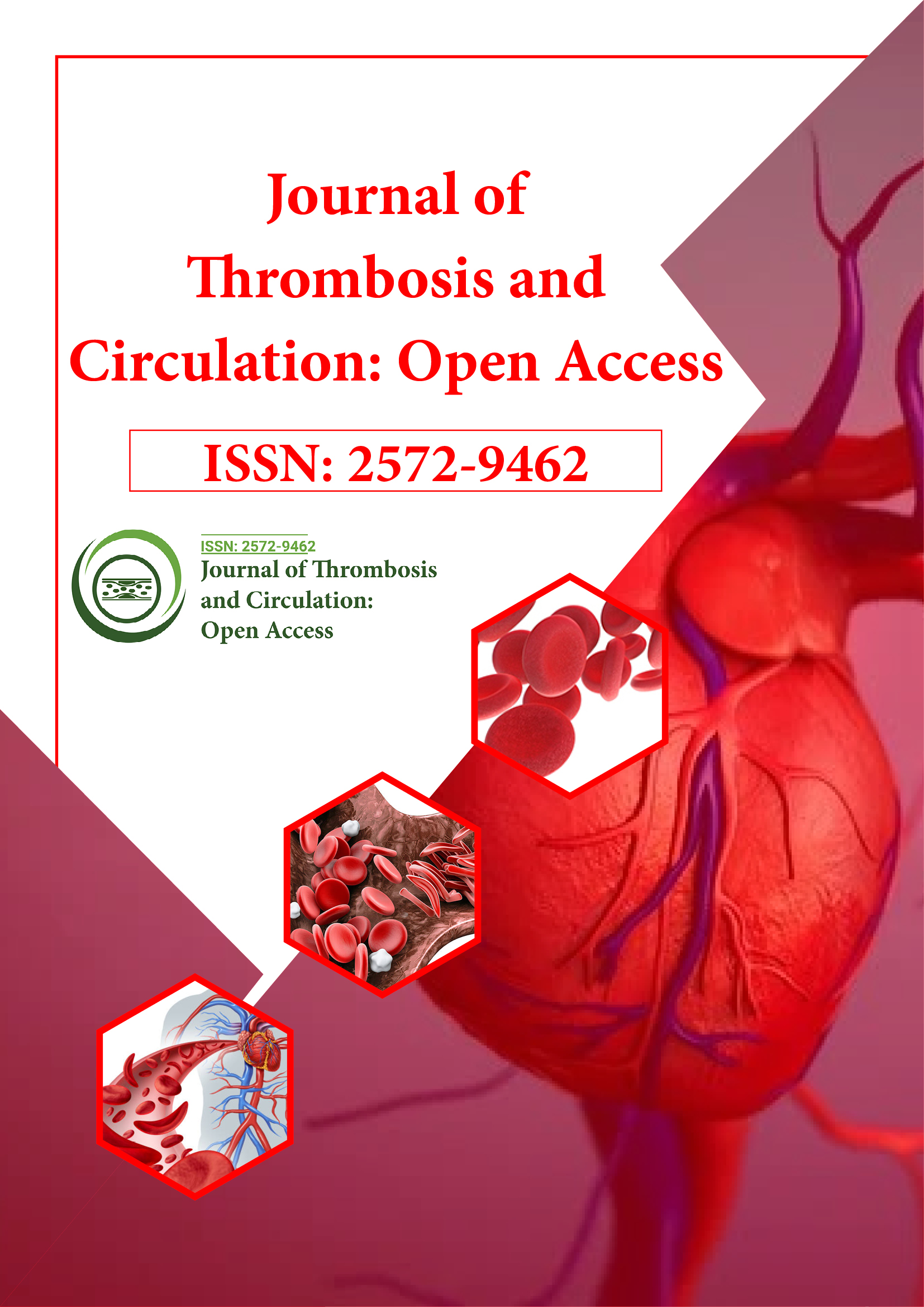Indexed In
- RefSeek
- Hamdard University
- EBSCO A-Z
- Publons
- Google Scholar
Useful Links
Share This Page
Journal Flyer

Open Access Journals
- Agri and Aquaculture
- Biochemistry
- Bioinformatics & Systems Biology
- Business & Management
- Chemistry
- Clinical Sciences
- Engineering
- Food & Nutrition
- General Science
- Genetics & Molecular Biology
- Immunology & Microbiology
- Medical Sciences
- Neuroscience & Psychology
- Nursing & Health Care
- Pharmaceutical Sciences
Perspective - (2025) Volume 11, Issue 1
Insights into Clot Formation in Thrombogenic Mechanisms
Isaac Goncalves*, Manuscript No. JTCOA-24-25206; , Pre QC No. JTCOA-24-25206; , QC No. JTCOA-24-25206; , Manuscript No. JTCOA-24-25206 ; , DOI: 10.4172/2572-9462.25.11.299
Introduction
Thrombosis, the formation of blood clots within blood vessels, is a complex physiological process crucial for hemostasis but can also lead to pathological conditions such as Deep Vein Thrombosis (DVT), Pulmonary Embolism (PE), and stroke when dysregulated. Understanding the thrombo-genic mechanisms underlying clot formation is essential for developing targeted therapies to prevent and manage thrombotic disorders effectively.Description
Initiation of thrombosis: Thrombosis typically begins with the disruption of vascular integrity, triggering a series of events collectively known as Virchow's triad: endothelial injury, abnormal blood flow, and hypercoagulability. Endothelial injury exposes the subendothelial matrix, initiating platelet adhesion and activation. Abnormal blood flow, such as stasis or turbulence, promotes platelet aggregation and fibrin formation. Hypercoagulability refers to conditions favoring clot formation, including alterations in coagulation factors, platelet function, or fibrinolysis.
Platelet activation and aggregation: Platelets play a central role in thrombus formation, responding rapidly to vascular injury to prevent bleeding. Upon activation, platelets change shape, release granule contents, and express surface receptors, promoting further platelet recruitment and aggregation. Adenosine Diphosphate (ADP), Thromboxane A2 (TXA2), and thrombin serve as potent platelet agonists, activating intracellular signaling pathways that culminate in cytoskeletal rearrangements and granule secretion. The formation of plateletrich aggregates serves as the initial scaffold for thrombus formation, providing a surface for subsequent fibrin deposition.
Coagulation cascade: Simultaneously, the coagulation cascade is initiated, involving a series of enzymatic reactions that ultimately convert soluble fibrinogen into insoluble fibrin strands. The intrinsic and extrinsic pathways converge at the activation of factor X, which, in the presence of calcium ions and phospholipids, forms the tenase complex, facilitating the conversion of pro-thrombin to thrombin. Thrombin acts as a key mediator in coagulation, cleaving fibrinogen to fibrin and activating platelets and additional coagulation factors, amplifying the clotting response. The cross-linking of fibrin strands stabilizes the developing thrombus, consolidating platelet aggregates into a firm clot structure.
Endogenous anticoagulant systems: While thrombosis is essential for hemostasis, the body employs several endogenous anticoagulant mechanisms to prevent excessive clot formation and maintain vascular patency. Antithrombin III (ATIII) and Tissue Factor Pathway Inhibitor (TFPI) inhibit coagulation factors, while the protein C pathway degrades activated factors V and VIII, limiting thrombin generation. Additionally, tissue Plasminogen Activator (tPA) initiates fibrinolysis, promoting clot dissolution and restoring blood flow.
Pathophysiology of thrombosis: Thrombotic disorders arise when the delicate balance between pro-coagulant and anticoagulant factors is disrupted. Conditions such as atherosclerosis, hyperlipidemia, and inflammatory diseases promote endothelial dysfunction and platelet activation, predisposing individuals to thrombotic events. Genetic predispositions, such as factor V Leiden mutation or deficiencies in anticoagulant proteins, further increase thrombotic risk.
Therapeutic implications: Understanding the thrombogenic mechanisms underlying clot formation is crucial for the development of targeted therapies for thrombotic disorders. Anticoagulant medications, such as heparin and warfarin, inhibit specific steps in the coagulation cascade, preventing clot propagation and embolization. Antiplatelet agents, including aspirin and clopidogrel, interfere with platelet activation and aggregation, reducing thrombotic risk in arterial circulation.
